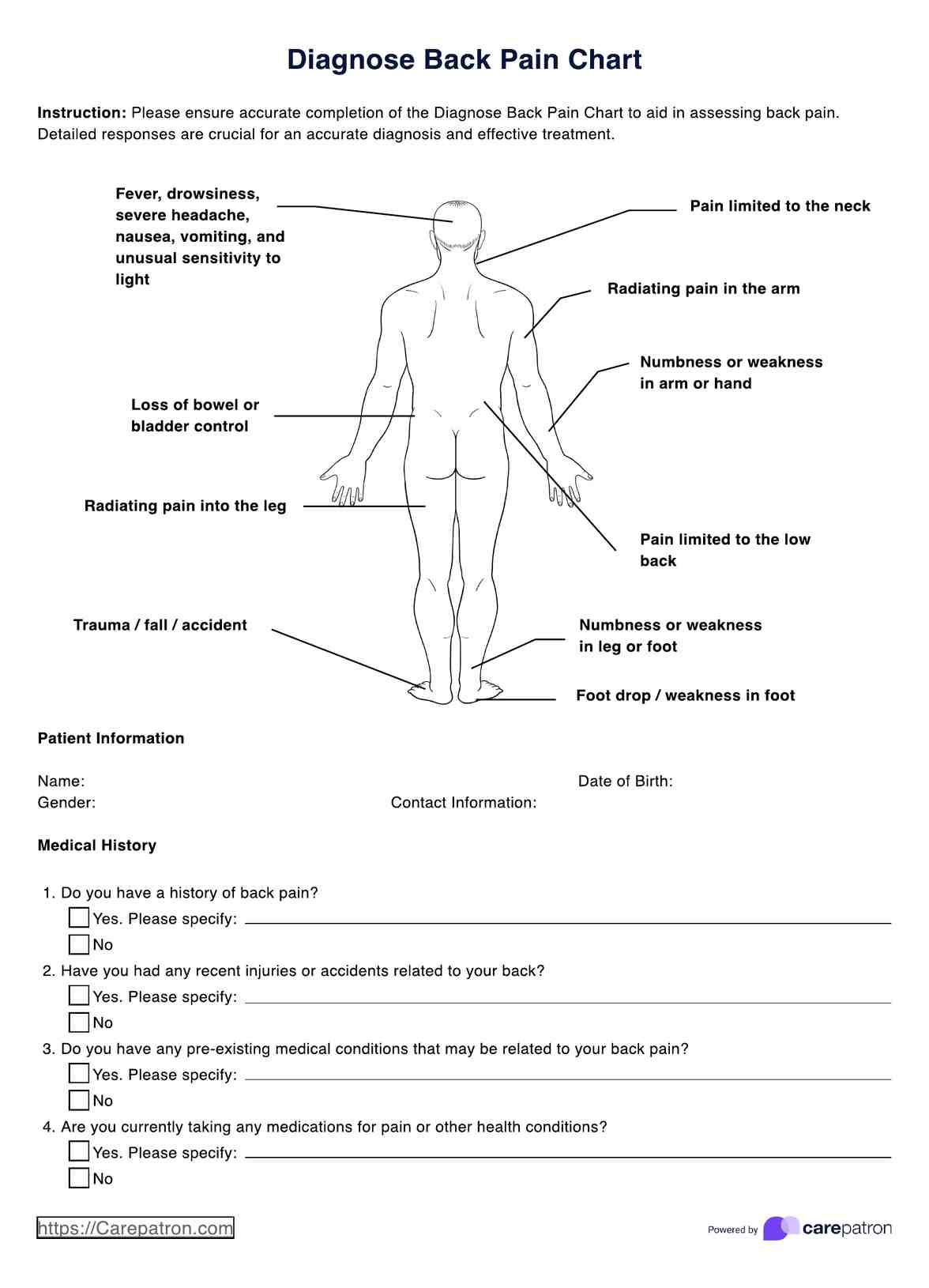Diagnose Back Pain Charts are typically used by healthcare professionals, including doctors, chiropractors, physical therapists, and orthopedic specialists, as well as by patients reporting back pain symptoms. They are essential tools for gathering and documenting information related to back pain.

Diagnose Back Pain Charts
Effectively diagnose and treat back pain with the Diagnose Back Pain Chart. Gather crucial data to customize and optimize the care and treatment of back pain.
Diagnose Back Pain Charts Template
Commonly asked questions
Diagnose Back Pain Charts are used when a patient experiences back pain and seeks medical evaluation or treatment. They are commonly employed during initial patient assessments, follow-up visits, and throughout treatment to track progress and make informed decisions.
The Diagnose Back Pain Chart can help a person by providing a structured and comprehensive way to communicate their back pain symptoms to healthcare providers, leading to more accurate diagnoses and tailored treatment plans. It empowers individuals with knowledge about their condition, enabling them to actively participate in their healthcare decisions and potentially improve their overall quality of life by effectively managing their back pain.
EHR and practice management software
Get started for free
*No credit card required
Free
$0/usd
Unlimited clients
Telehealth
1GB of storage
Client portal text
Automated billing and online payments











